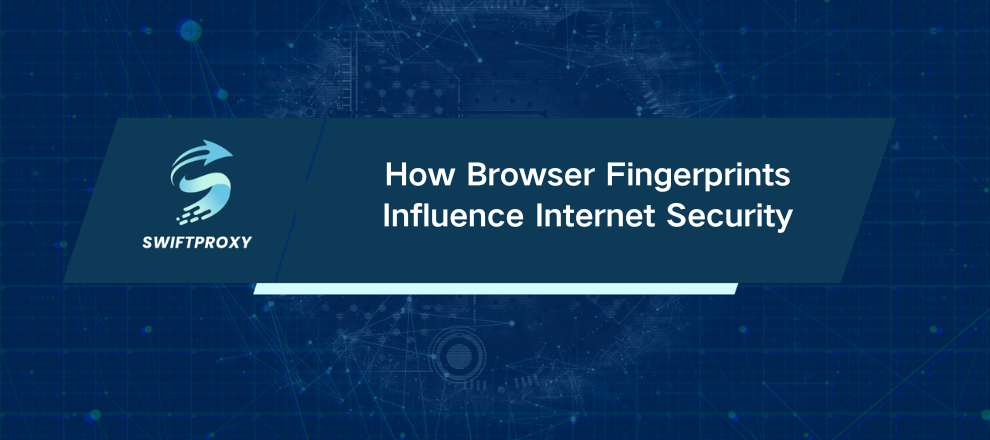How Browser Fingerprints Influence Internet Security

Every click, scroll, or tap leaves a digital trace. Hidden in plain sight, browser fingerprints quietly identify users across websites—even in incognito mode. Unlike cookies, these fingerprints don't need consent, and they can reveal far more than just your IP.
As tracking techniques evolve, so do the tools to defend against them. Antidetect browsers have emerged as a reliable solution for those who value privacy and anonymity, whether for personal protection or professional operations.
In this article, you'll learn how browser fingerprinting works, which data points are most revealing, and how tools like Dolphin Anty can neutralize these threats effectively and ethically.
Understanding Browser Fingerprinting
A browser fingerprint is a unique digital signature formed by a combination of device and browser characteristics. This includes:
Operating system and browser type
Installed fonts and plugins
Screen resolution and color depth
Time zone and language settings
Hardware details detected through rendering tests
Unlike cookies, fingerprints don't store data on your device. Instead, they analyze your environment in real-time. This makes fingerprinting remarkably persistent and hard to block. Platforms rely on it to detect fraud, prevent multi-accounting, enforce bans, or identify returning users—even in private browsing modes.
Key Fingerprint Components
Some of the most frequently collected parameters include:
Canvas and WebGL: Capture subtle differences in graphics rendering caused by GPU, drivers, or fonts.
AudioContext: Reveals hardware or software variations in sound processing.
Time Zone and Language: Provides clues about your location and system settings.
User-Agent and Platform Info: Exposes your browser version, OS, and CPU architecture.
Installed Fonts and Plugins: Adds additional uniqueness to your profile.
Combine all these, and you get a highly detailed digital portrait. Add minor factors like touch support, battery status, or media device IDs, and the fingerprint becomes nearly impossible to ignore.
How Antidetect Browsers Prevent Fingerprinting
Stopping fingerprinting isn't as simple as clearing cookies. Fingerprints rely on layered hardware and software signals. Neutralizing them requires active management.
Dolphin Anty tackles this with a two-pronged approach:
Fingerprint Spoofing: The browser presents altered or randomized device parameters—canvas, WebGL, language, timezone, screen resolution, and more—breaking the consistency that tracking relies on.
Profile Containerization: Each profile runs in isolation, with its own fingerprint, cookies, storage, and browsing history. Multiple accounts can operate safely in parallel.
Add high-quality proxies to the mix, and you get IP-level separation that matches your spoofed fingerprint. Dolphin Anty ensures consistency across layers—avoiding mismatches between timezone, proxy location, screen resolution, and User-Agent.
Practical Use Cases
Web Scraping and Data Extraction
Automated tools often get blocked due to repetitive patterns or identical fingerprints. Antidetect browsers rotate profiles and spoof fingerprints, keeping access open and reducing detection risks.
E-commerce and Marketplace Management
Sellers managing multiple storefronts on Amazon, eBay, or Shopify can safely handle accounts without triggering bans. Each profile is isolated, with unique cookies and fingerprints.
Affiliate Marketing
Campaigns targeting multiple geographies require testing landing pages, tracking redirects, and simulating real users. Fingerprint control ensures ads display correctly, conversions improve, and accounts remain safe.
Cybersecurity and Fraud Insights
Security teams simulate user behavior to analyze phishing attempts, malicious ads, or platform vulnerabilities—all without exposing internal systems.
Account Setup and Automation
For niches that require multiple social or marketplace accounts, antidetect browsers enable large-scale account creation while maintaining the appearance of real users.
In all cases, controlling fingerprint parameters, rotating proxies, and isolating sessions is key to operational integrity and anonymity.
Conclusion
Browser fingerprinting is sophisticated, silent, and persistent. Countering it requires equally advanced tools. Antidetect browsers like Dolphin Anty give professionals the ability to stay anonymous, manage multiple accounts, and maintain privacy—while operating within ethical and legal boundaries.

















































